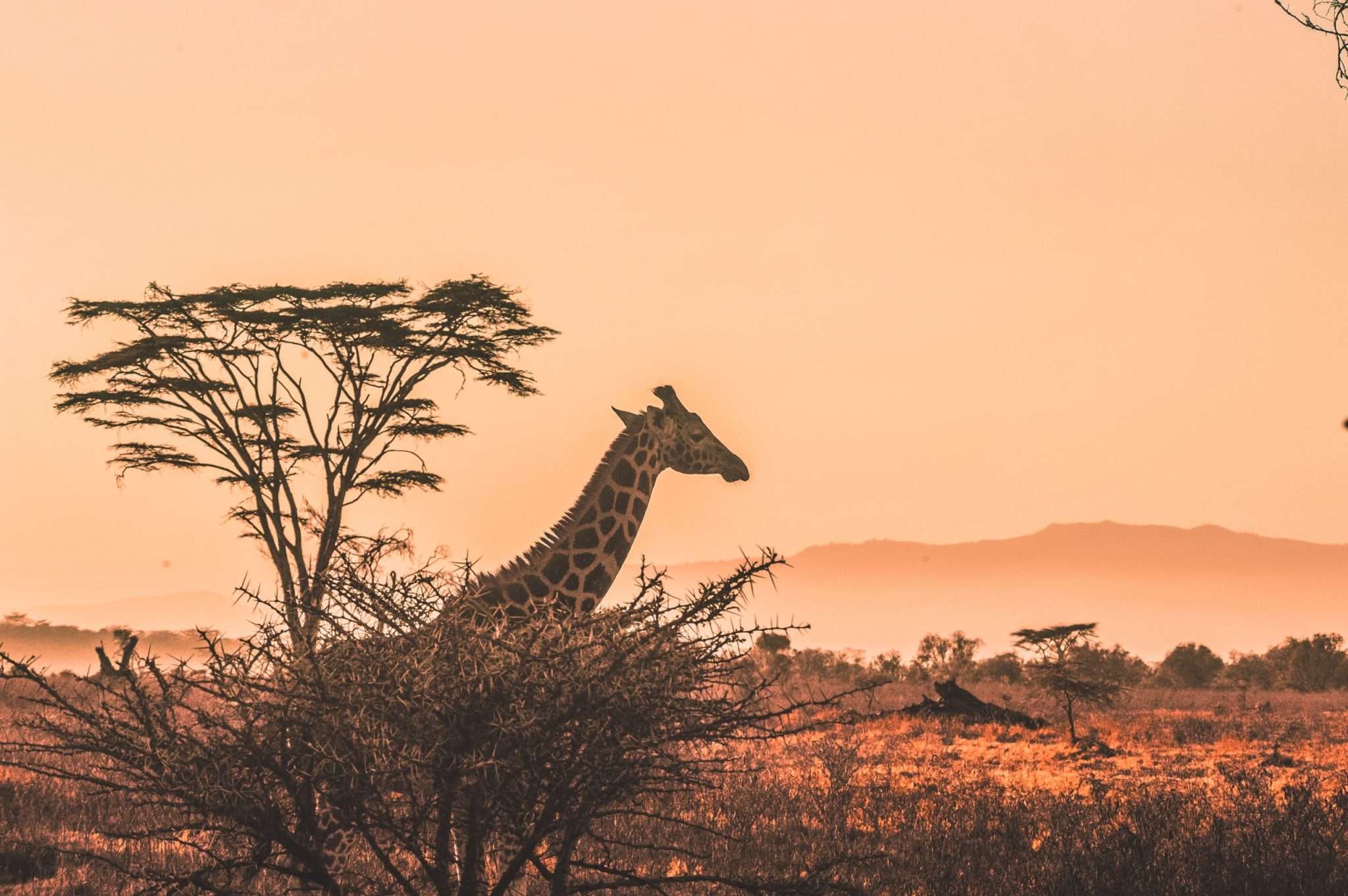As conservation efforts for Africa’s dwindling giraffe populations tick up, research points to another reason to protect these elegant ungulates.
Few animals capture the imagination of a child quite like the giraffe. The tall, gentle herbivores hover over us like doting mothers. But with numbers now teetering toward endangered, scientists have discovered we’ve misunderstood these gentle giants for ages. And it could be just in the nick of time.
Research published last year by the University of Bristol says giraffes are highly social creatures, long mislabeled as “socially aloof.”
The findings, published in the journal Mammal Review, include the first documented understanding of the giraffe’s social network. The researchers looked at more than 400 papers on giraffe behaviors.
Complex social systems
“The most surprising thing for me is that it has taken until 2021 to recognize that giraffes have a complex social system. We have known for decades about other species of socially complex mammal, such as elephants, primates and cetaceans, but it is baffling to me how such a charismatic and well-known species as the giraffe could have been so understudied until recently,” Zoe Muller, study author and biologist at the University Of Bristol’s School of Biological Sciences, said in a statement last year.

Like a number of species, including their Serengeti mates, the African elephants, giraffes are matrilineal, with female giraffes bonding and sharing the rearing responsibilities of the collective young. Mother giraffe and her calves also form deep bonds, the research found. Like elephants, the mothers show distress and grief when a calf dies — even if it’s not her own. Giraffes bond with young born from other females in the society.
The research points to a rare theory about animals in the wild called the grandmother hypothesis. Seen in a few species outside of humans, including orcas and elephants, females live long after their prime reproductive years in what’s believed to be a way to help the species survive. In these matrilineal societies, 30 percent of the lifetime of female giraffes were “post-reproductive”. For elephants, that number is closer to 23 percent; in orcas, it’s 35 percent. In humans, it can be upwards of 50 percent.
Matrilineal societies
“My suggestion is that giraffe ‘grandmothers’ probably play an important role in the survival of related group members. Grandmothers are likely to be repositories of knowledge for the group, but also play an important role in childcare and co-rearing of young,” Muller told CNN.
Despite the enormity of challenges giraffes face — from predators and poachers to the challenge of feeding their 14-foot, 1,500-pound frames — these okapi relatives can live more than three decades.

The researchers say there’s still more to learn, like how the giraffe communicates, what the life cycle of the males looks like after reproductive prime, and just what benefits the group living offers the individuals.
But the researchers do agree that the new information could help to protect the species; giraffe populations have declined more than 40 percent since 1985. They’re currently listed as vulnerable by the International Union for Conservation of Nature.
Muller says she hopes the study “draws a line in the sand”, and from that point forward, “giraffes will be regarded as intelligent, group-living mammals which have evolved highly successful and complex societies, which have facilitated their survival in tough, predator-filled ecosystems.”
Endangered status
Giraffes have been listed as Vulnerable on the International Union for Conservation of Nature Red List since 2016. Last May, the U.S. Fish and Wildlife Service agreed to a November 2024 deadline to determine whether or not to protect giraffes under the Endangered Species Act. The announcement was in response to a lawsuit filed by conservation and animal protection groups The Center for Biological Diversity, Humane Society International, and the Humane Society of the United States.
The groups filed the suit after initially requesting giraffe protection in 2017. The U.S. Fish and Wildlife Service failed to come to a decision before its deadline, leading to the lawsuit.

“This is a crucial step for giraffes, whose populations are dwindling while products made from their skins and bones flood into the United States,” Tanya Sanerib, international legal director at the Center for Biological Diversity, said in a statement last May. “This agreement was desperately needed to help give everyone’s favorite long-necked mammal a shot at federal protections. But during an extinction crisis, it shouldn’t take litigation to get action under the Endangered Species Act. We should be racing to save every species we can.”
Fewer than 69,000 mature giraffes remain in the wild — a population decline of nearly 40 percent over the last 30 years. The groups say those declining numbers are the result of poaching, habitat loss, civil unrest, and human-caused habitat changes. They also point to the international trade on giraffe parts such as bone carvings, skins, and trophies as threatening the species’ survival.
According to a 2018 undercover investigation led by Humane Society International and the Humane Society of the United States, over the course of ten years, the U.S. imported one giraffe hunting trophy per day on average and more than 21,400 bone carvings.
Endangered Species Act protection would help to reduce the import and sale of giraffe parts and increase funding for conservation efforts across Africa.
“The United States is a top importer and seller of giraffe parts — including heads, legs and feet, tails and skins — and a leading contributor to the threat of extinction of the species,” Adam Peyman, wildlife programs director for Humane Society International, said in a statement. “The demand for these items is deplorable and an Endangered Species Act listing will strengthen the ability to combat this horrific domestic market.”
Related on Ethos:


